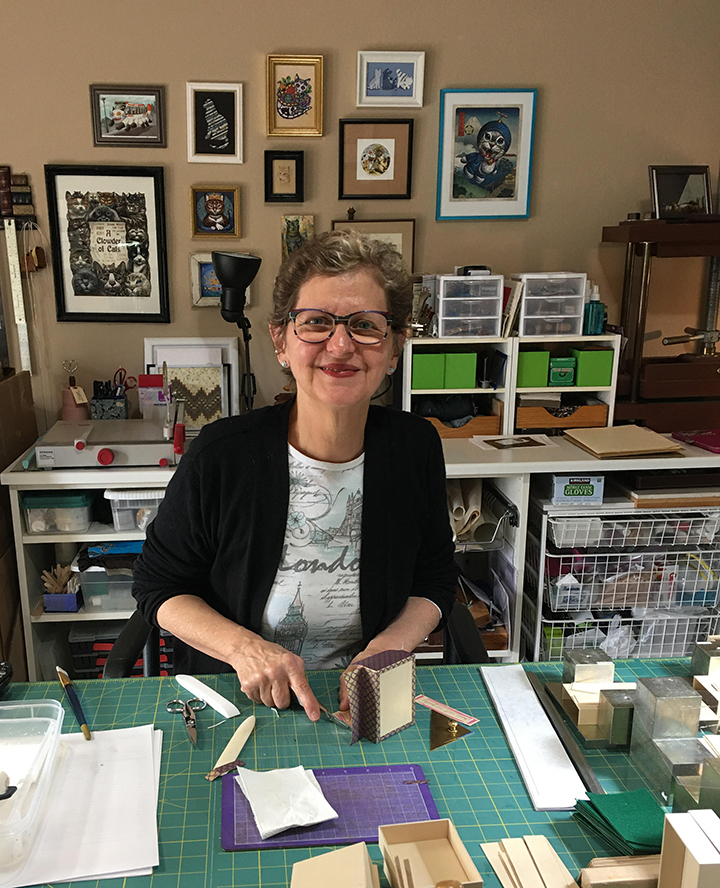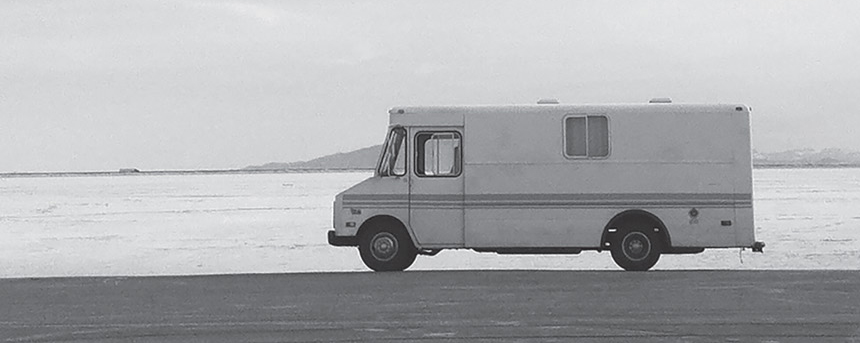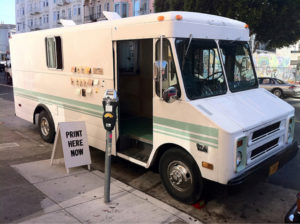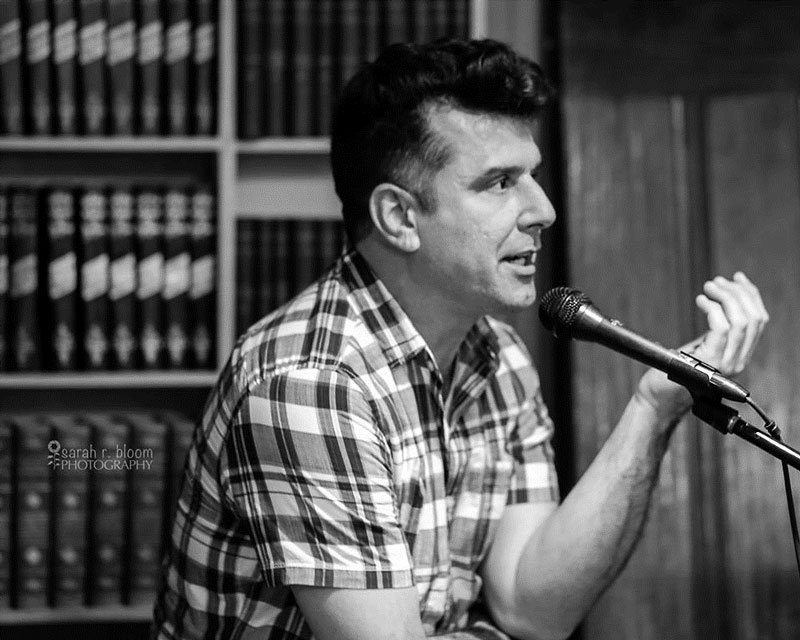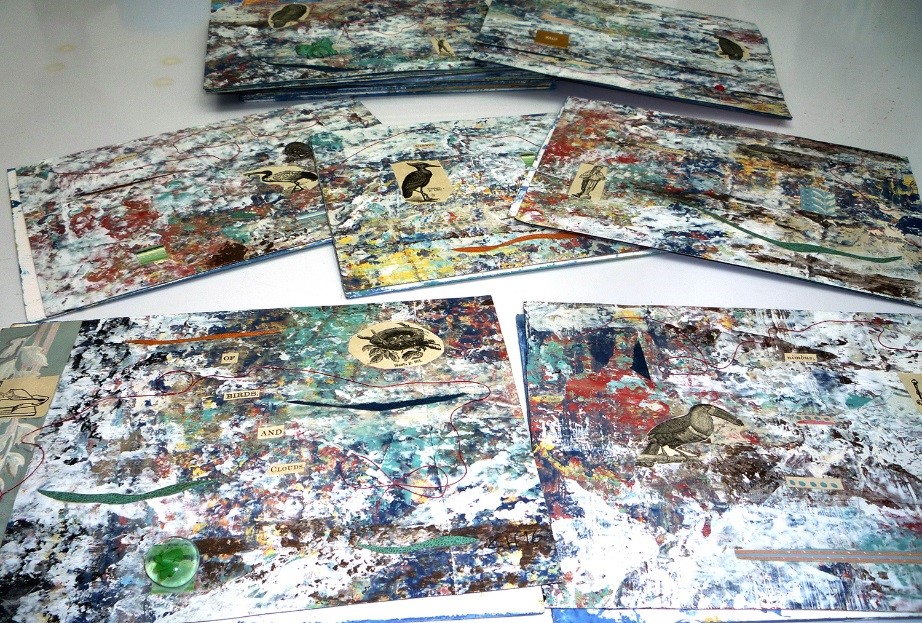Here’s another one from the Biblio Files, a periodic profile of a community member, highlighting what makes ABAC an awesome place to work and to learn!
- What drew you to study book arts?
In the early 90s I discovered Paper Arts in Dallas (in its first incarnation as Paper Routes). I started making greeting cards with the fabulous paper I found there. When I asked the proprietor where I could learn more about what to do with paper, she suggested the Craft Guild of Dallas. There I found my first teacher and mentor, Catherine Burkhard. After a few classes I was hooked! I studied there with Catherine and then in her home studio for well over a decade.
In the late 90s I began performing repair work on Catherine’s projects under her supervision. Eventually, I began building my own book repair business that continues today.
I’ve been quoted a few times saying about becoming a bookbinder: “It’s a hobby that got out of control!”
2. What are your favorite book structure to make? Why?
My favorite structure is usually the most recent one I’ve learned. Although I rarely have time to make them, I’m drawn to exposed spine sewing. Why keep all that work under cover?
Also, I think I could sew link stitch books forever. It’s a very Zen activity. In fact, I find a lot about bookbinding and book repair meditative. So, for me, it’s not so much a favorite structure, but the ability to become hyper-focused on the task in front of me and toss aside whatever is worrying me that day.
3. Who are your biggest influences?
I’ve attended about a dozen Guild of Book Workers’ Annual Standards of Excellence Seminars around the country; all but the first Helen Warren DeGoyler Triennial Exhibition and Competition in Dallas. I traveled across the pond in 2001 to attend a Society of Bookbinders conference in Oxford, England. Additionally, I’ve had several opportunities to study with some of the best binders of our time through workshops. I even got to study with Monique Lallier—one of the best fine binders of our time—for two weeks in her North Carolina home studio.
Each time I’m in the presence of the talented individuals I’ve been lucky enough to encounter, I try to soak up every morsel of information that is tossed out. Being around the masters of any craft can only improve one, no matter if you’re a beginner, experienced or a pro.
I count all the talented binders that I was lucky enough to experience in the first decade or so of my learning curve as huge influences on what I do each day. I guess it takes a village to train a bookbinder!
4. What do you enjoy about teaching at ABAC?
It’s fun to meet people with diverse backgrounds and interests. I remember how proud I was of the first pamphlet stitch book I made, and hope that every student has a similar experience at ABAC.

